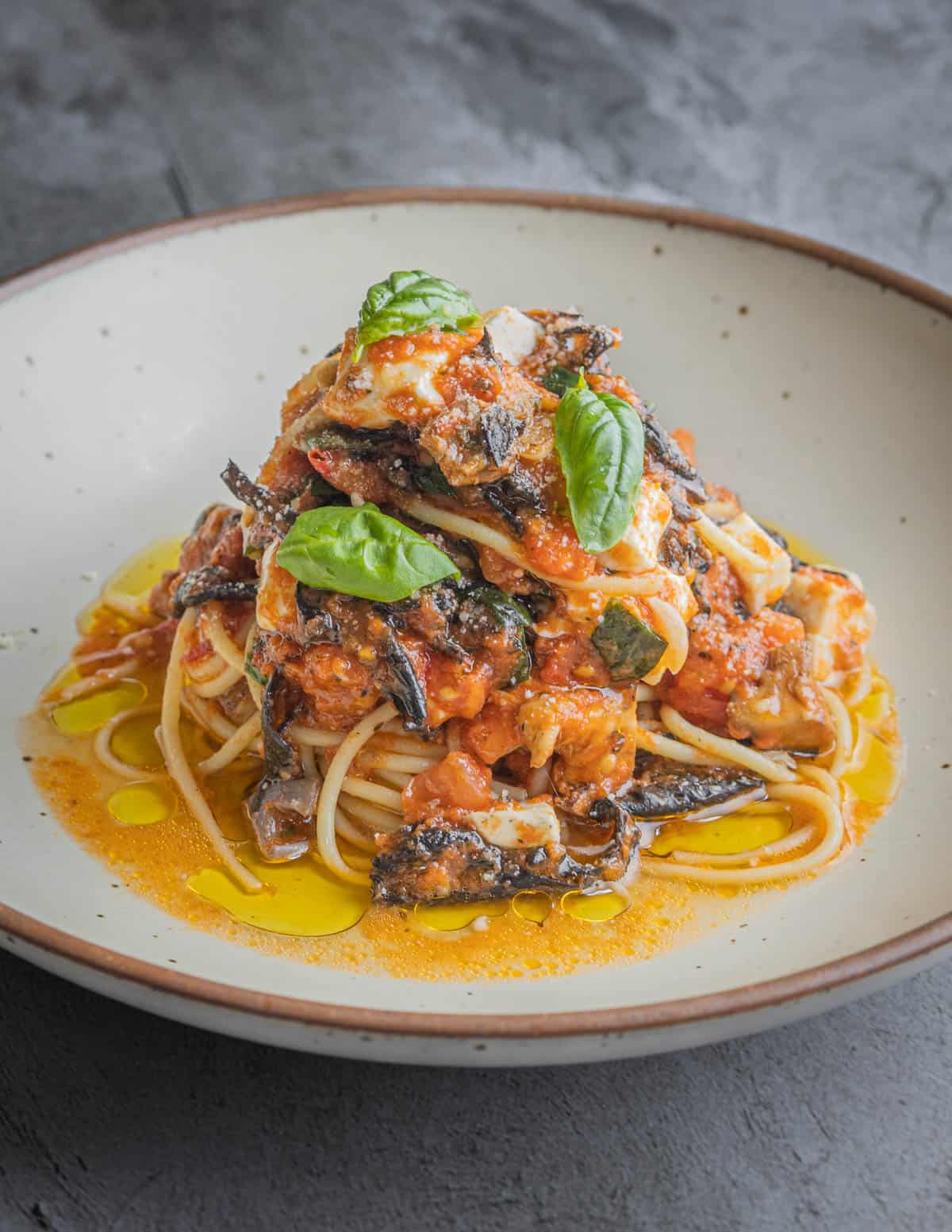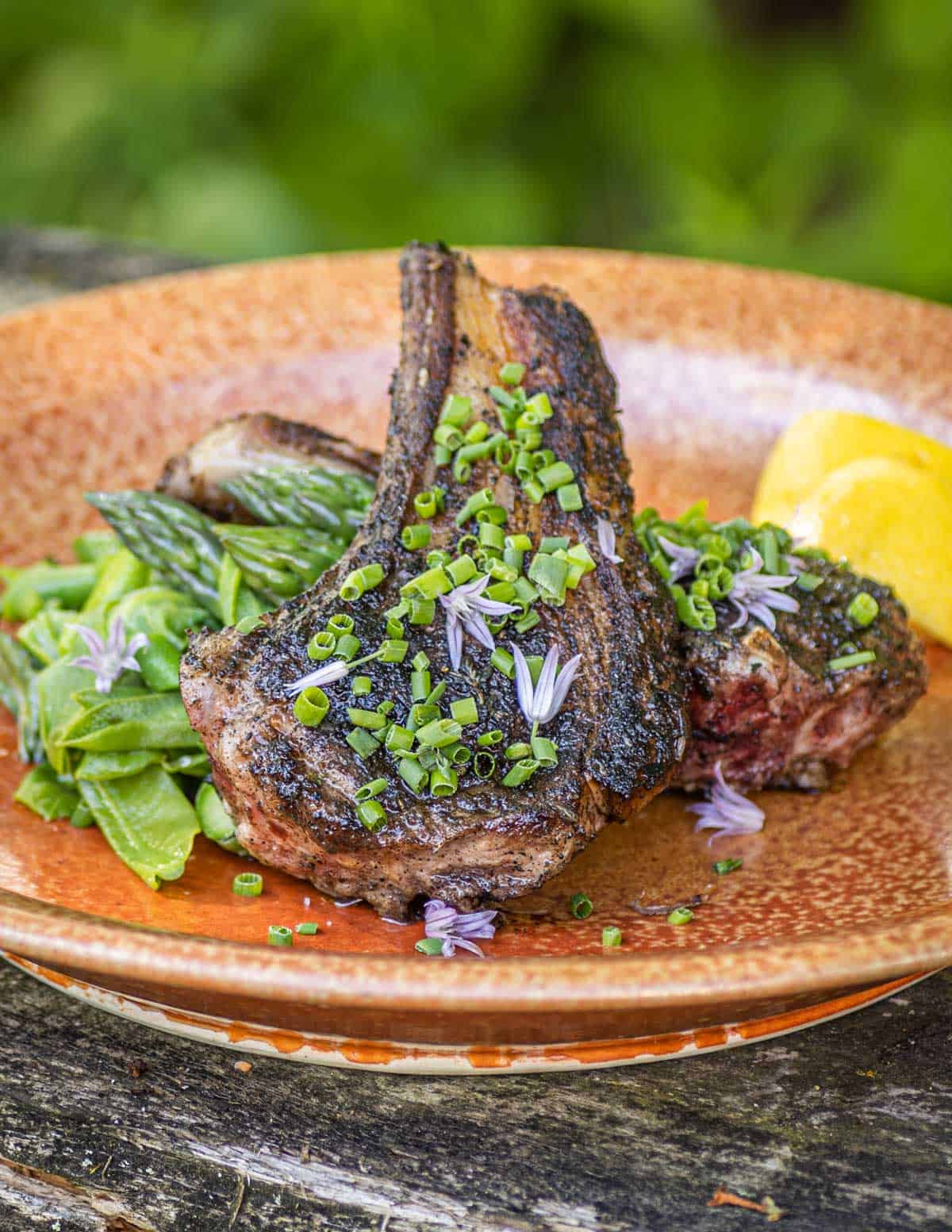Black trumpet mushrooms, also known as the horn of plenty or horn of death. Don’t let the name confuse you though-these are one of the best wild mushrooms to harvest, hunt and cook, and are valued around the world as a gourmet ingredient and choice edible mushroom.
In this post I’m going to share with you everything I know about hunting, identifying, harvesting and cooking these mushrooms, along with some of my favorite recipes for black trumpets at the end.
For reference, I’m in the Midwest, so most of what I discuss here for hunting will refer to Craterellus fallax as it’s the most common species near me. Older field guides may use the name Craterellus cornucopiodes, now seen as a European species.
Table of Contents
Where to Find Black Trumpet Mushrooms
In mid-summer, typically early July through October, (I’ve picked them as late as November) I will start to check my patches. Where do black trumpets grow? In my area, around white and red oak trees. One species (Craterellus caeruleofuscus) grows with pines, but isn’t as widely available.
One of the best parts about these mushrooms is the sheer volume you can find, when, and if you find the right kind of patch. The harvests will vary from year to year depending on seasonal conditions, but there will usually be some.
Two friends of mine have near-legendary patches in Minnesota, that, on a good year, with an extra hand or two, you could pick 30, 40lbs or more. As trumpets are very light weight compared to others, that kind of quantity is massive.
Wet and decaying areas
Often when you’re hunting these I look for moist, shady areas. They may be close to a small source of water or a wet/swampy area where there’s decaying and dead wood. Golden chanterelles, by comparison may occasionally be nearby, but I don’t see them as much in wet areas as I do trumpets.
At least to me, black trumpets seem to operate in two ways: mycorrhizal and saprobic, meaning that they grow both in harmony with certain trees, and will seem to live off of decaying matter. Contrastingly, golden chanterelles are only mycorrhizal.
Most of the time with mushrooms from my experience, they’ll be one or the other but not both, which makes trumpets extra special.
A good trick to remember when you’re searching for new patches is that trumpets like to be often in the same areas as some of their other chanterelle cousins, especially the yellowfoot chanterelle which is much easier to spot from a distance as it isn’t black.
If you see one of the orange mushrooms pictured above, or golden chanterelles, it’s a good indication you’re on the right track.
Sphagnum moss
It isn’t true everywhere, but trumpets seem to have an affinity for sphagnum moss. When I’m in a forest with red or white oaks, and I start seeing sphagnum moss during the summer, I make sure to keep my eyes open for trumpets.
More often than not, when I see moss and start looking closely, and walking slowly, I’ll find some.
Black Trumpet Mushroom Identification
Found across North America, black trumpets are one of the easiest wild mushrooms to identify, with nearly no real look-a-likes. Your biggest challenge will be finding a good patch at the right time.
Black trumpets
- Have a whitish to creamy spore print.
- Have an unique aroma I describe as dark and intensely sweet aroma of apricots that are nearly overripe. Golden chanterelles, by comparison, smell like fresh apricots.
- Are mostly black, or shades of grey, but one species is nearly blue (see below) and white, albino mutations are also possible.
- Often grow clustered, with a shape like a horn or funnel.
- Do not have gills, but can have false gills. They may have veins that are difficult to see on the outside (called the spore-bearing surface or hymenium) or the veins may be more pronounced with some specimens-see below.
Different Species
There’s more than one species to learn about and enjoy, each one with slightly different characteristics. Two I’ve found are craterellus foetidus and craterellus cinereus, which some may call black chanterelles, but there’s others too.
No matter what kinds grow near you, one thing’s for certain: if it’s a true black trumpet it’s edible and delicious, and knowing the exact species is purely academic. If you’re like me though, the more you learn about wild mushrooms, the more you’ll want to know the exact types your finding.
Look Alikes
Some consider devil’s urn (Urnula craterium) a trumpet look alike, but they’re more cup-shaped and appear in the spring. They’re edible, but don’t taste very good.

Cleaning Black Trumpet Mushrooms
Cleaning starts in the field. Some people just pull the mushrooms out of the ground and put them in a basket-don’t do that. To avoid dirty mushrooms that can ruin your food with grit, I pull them from the ground, cut the end off, along with any dirt, then put them in the basket.
If I’m going to a patch where I expect to harvest lots of mushrooms, I like to bring a scissors since I can just bend down and snip-snip-snip, leaving the dirty bottoms behind and keeping all the mushrooms in my bag clean.
If my trumpets are very clean, I just open them up, leaving them in one piece, and give them a brush with a mushroom or pastry brush.
One of the best things about these mushrooms is that they’re often very clean, and may not need any additional trimming after they’re cut from the field, if you pick clean and carefully.
If my trumpets are a dirty or it’s rained recently, I slice them in half lengthwise and then give them a gentle dip in some cool water, working quickly so that they don’t absorb too much liquid.
After you wash them, just set them on some paper or cloth towels to air dry a bit and shed any water that may be sticking to them. I describe this a bit in the video below.
‘
How to Cook Black Trumpet Mushrooms
Black trumpet mushrooms have one of the most potent flavors of all wild mushrooms, especially when fresh.
They may be fragile or small, but they pack a punch. It’s hard to describe exactly what black trumpets taste like besides saying they’re delicious, but the flavor is a sort of a rich, earthy, oddly sweet and fruity taste that will remind you of fresh apricots and ripe stone fruit, with a bitter note at the end. It’s a delicious, unique taste.
One of the best things about these is their versatility. If you’ve just come back from a long hunt, there’s nothing wrong with just tossing some mushrooms in a pan with butter.
But if you have more time, you can make all kinds of things, limited only by your time and imagination. Here’s a few things I think are helpful.
Quick tips
- As they’re hollow, trumpets cook very fast-so don’t overcook them.
- A large amount will wilt down to a fraction of it’s size in the pan.
- Trumpets will turn other foods they come into contact with black or grey if the mushrooms are fresh.
- Another name for them is poor man’s truffle. Finely chop them as a (visual) substitute for black truffles.
- With a sweet aroma and tender texture, these can work in sweet and savory dishes, such as candying.
- Black trumpets can be eaten raw in small amounts as a garnish.
Like most mushrooms, these marry wonderfully with cream. Like other chanterelles, I would encourage you to cook these by themselves first, and keep things simple as their flavor can be overwhelmed by strong flavors like excessive garlic, smoked food, spices, and spicy/hot seasonings.

Bitterness
Use trumpets with a light hand at first as they can be bitter if you use too many in a dish. The bitterness will concentrate itself, so be careful when making reduction-type sauces, for example: purees, or putting too many in a soup.
The bitterness is a bit of an acquired tastes, and most mushroom hunters grow to like and crave it to some extent. It’s not unpleasant, but some sensitive people may not like it.
How to Dry Black Trumpet Mushrooms
There’s a few different ways you can preserve trumpets, but drying is by far the best. Luckily, as black trumpets are hollow, they dry like a dream, and are one of the best mushrooms for drying and using in the off season as they don’t get tough. To dry the mushrooms, I look over them for debris, then put in a dehydrator at 120-145F until cracker dry, typically overnight.
Occasionally I’ve left mushrooms spread out on cookie sheets with a ceiling fan blowing on them and found them naturally dehydrated after a day or two-something you can’t do with golden chanterelles.
Once they’re cracker dry, I store the mushrooms in a sealed glass container or mason jar. For cooking, rehydrate the mushrooms by covering with warm liquid, stock, or alcohol. Remove the mushrooms, strain the liquid for debris, adding the mushrooms back to their liquid for whatever recipe you’re making, or simply frying them up and discarding the liquid if you don’t need it.

Black Trumpet Mushroom Recipes
Here’s some of my favorite black trumpet recipes, or places where they can be substituted. One of the most unique things about these mushrooms is that they can work in savory as well as some sweet applications, so find a few of both below.
- Black Trumpet Pasta
- Candied Trumpets
- Sweet Mushroom Jam
- Jacques Chibois’s Carbonara of Chanterelles and Black Trumpets
- Baked Fish with Trumpet Crust
- Rack of Lamb or Venison with Dried Trumpet Crust
- Black Trumpet Coulis
- Rabbit Braised In Milk, with Trumpets And Carrots
More Trumpet Recipes
More
35 Essential Wild Mushrooms Every Forager Should Know
References
David Arora: Wild Mushrooms Demystified
MushroomExpert.com: Craterellus Fallax











































